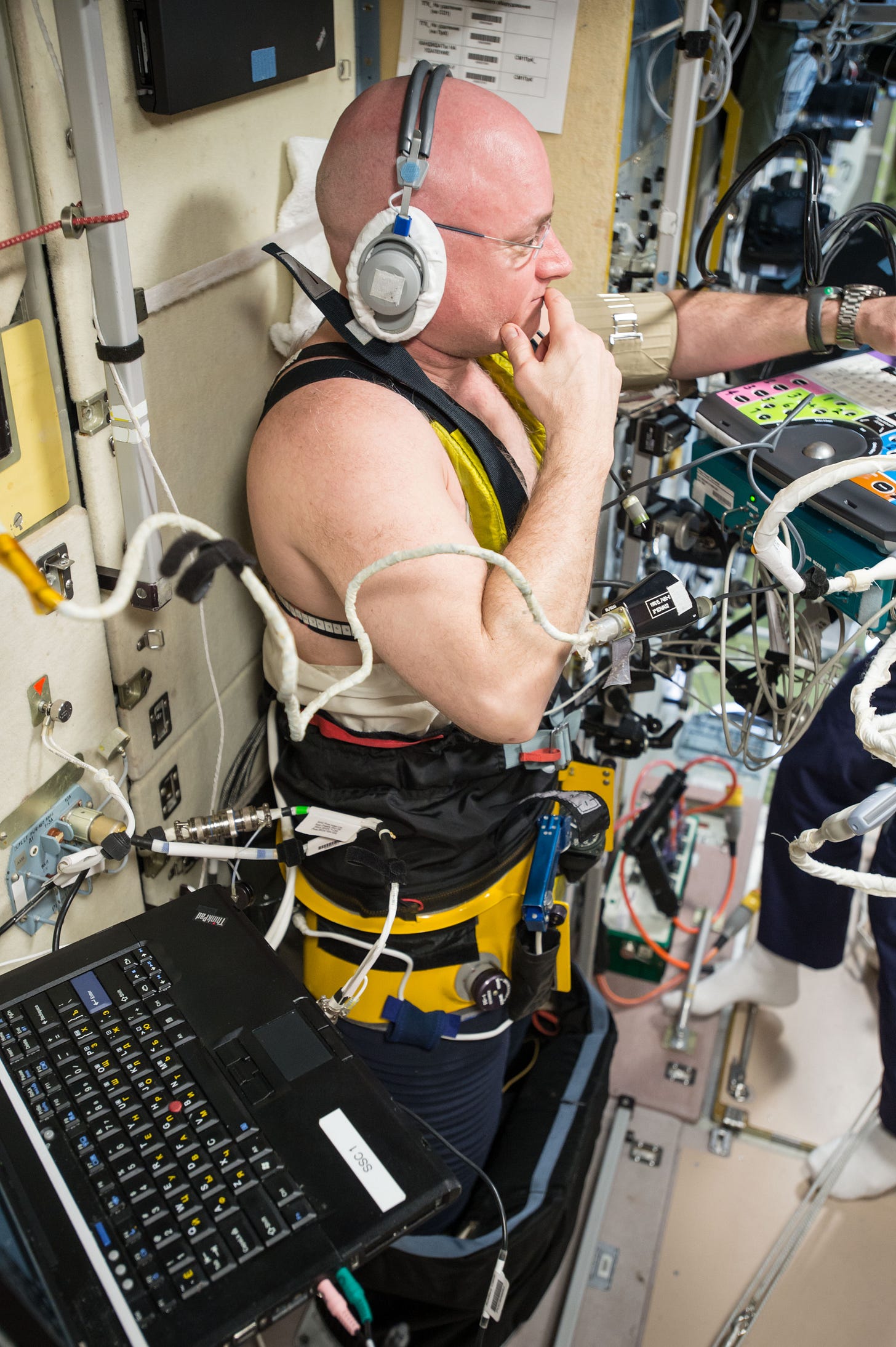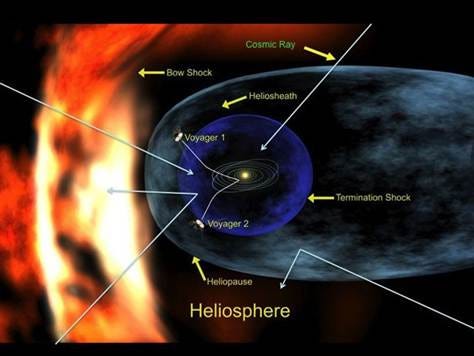Space Medicine and Astronaut Health
Navigating the Challenges of Exploration
We humans have developed the technology required to send unmanned vehicles to the edge of the solar system, but the same for manned vehicles has led us to reach only as far as our nearest neighbor, the moon.
While there do exists some technological limitations for reaching beyond moon, the unique space environment also poses numerous challenges to the human body, from microgravity effects to radiation exposure. As we push the boundaries of human exploration, the field of space medicine becomes extremely important and will play a vital role in ensuring the health and well-being of the astronauts during their missions.
In this article we will go in detail in understanding the different challenges and the solutions that have been designed or being developed to tackle them.
Microgravity Environment
The effects of microgravity on the human body are among the most significant challenges faced by astronauts during space missions.
Let's delve deeper into some of the key effects of microgravity:
Musculoskeletal Changes
In the microgravity environment of space, the absence of the constant pull of gravity leads to a decrease in mechanical loading on the musculoskeletal system. As a result, astronauts experience muscle atrophy (muscle wasting) and loss of muscle strength. The reduced mechanical stress on bones also causes a decrease in bone mineral density, leading to bone loss and an increased risk of fractures. These musculoskeletal changes can compromise physical performance, impair mobility, and necessitate significant rehabilitation upon returning to Earth.

To counteract these effects, astronauts engage in rigorous exercise regimens during space missions. Resistance exercises, such as weightlifting and resistance band workouts, help maintain muscle strength and mass. Additionally, aerobic exercises, such as cycling and treadmill running, help mitigate cardiovascular deconditioning and promote overall fitness.
Cardiovascular Alteration
Microgravity triggers various cardiovascular adaptations that can pose risks to astronaut health. The shift from a gravity-driven circulatory system to a fluid redistribution pattern in microgravity results in the upward movement of fluids toward the head, causing facial puffiness and a decrease in leg volume. This fluid shift can lead to cardiovascular deconditioning, including a decrease in heart size, blood volume, and cardiac output. Astronauts may experience orthostatic intolerance, which is a reduced ability to maintain blood pressure upon standing, upon returning to Earth.

To counteract these effects, astronauts participate in aerobic exercises to maintain cardiovascular fitness. Furthermore, lower body negative pressure devices and other countermeasures are used to simulate the effects of gravity and mitigate fluid shifts.
Fluid and Electrolyte Regulation
Microgravity affects the body's fluid and electrolyte balance. In space, the lack of gravity-driven fluid distribution leads to a reduced thirst sensation and fluid intake. This can result in dehydration and electrolyte imbalances. Additionally, the altered fluid distribution and reduced use of leg muscles can lead to a decrease in urine production, potentially causing kidney stone formation.
Astronauts follow strict hydration protocols and undergo monitoring to ensure adequate fluid intake. Electrolyte supplementation may also be necessary to maintain the body's electrolyte balance.
Vision Changes
One of the intriguing effects of microgravity is the occurrence of visual impairments and changes in visual acuity among astronauts. Some individuals experience a condition known as Spaceflight-Associated Neuro-Ocular Syndrome (SANS) or space-induced visual impairment. It is characterized by structural and functional changes in the eye, including optic disc edema, retinal folds, and alterations in the shape of the eyeball. The exact causes of these vision changes are still under investigation, but they are believed to be related to the fluid shifts, changes in intracranial pressure, and altered blood flow in microgravity.
Research is ongoing to understand the mechanisms behind these vision changes and develop countermeasures to mitigate their impact on astronaut health.
Immune System Suppression
Microgravity has been observed to have suppressive effects on the immune system. Astronauts in space have shown alterations in immune cell function and a decrease in the production of certain immune factors. This immune dysregulation can potentially compromise the body's ability to fight infections and mount effective immune responses.
To address this, researchers are studying ways to modulate and maintain optimal immune function during space missions. These studies aim to understand the underlying mechanisms and develop strategies to enhance
Radiation Exposure
Radiation exposure is another significant concern for astronauts during space missions. Beyond Earth's protective atmosphere and magnetic field, astronauts are exposed to increased levels of ionizing radiation which pose potential health risks and can have long-term consequences for astronauts' well-being. Let's explore the effects of radiation exposure and the measures taken to mitigate these risks:
Types of Radiation:
Galactic Cosmic Rays (GCRs)
GCRs consist of high-energy particles, primarily protons and atomic nuclei, originating from outside our solar system. They have extremely high velocities and can penetrate spacecraft materials. GCR exposure is a continuous risk during space missions, as astronauts are exposed to these particles throughout their journey.
Solar Particle Events (SPEs)

SPEs are sudden bursts of high-energy particles, primarily protons, electrons, and heavy ions, originating from the Sun. They are associated with solar flares and coronal mass ejections (CMEs). While less frequent than GCR exposure, SPEs pose an acute radiation risk during space missions. Astronauts must be shielded or seek adequate protection during these events.
Health Effects of Radiation Exposure:
Radiation exposure can have various detrimental effects on the human body, including:
Increased Cancer Risk
Prolonged exposure to ionizing radiation raises the risk of developing cancer, as radiation can damage DNA and disrupt normal cellular function. Tissues and organs particularly susceptible to radiation-induced cancer include the lungs, colon, breast, and thyroid.
Central Nervous System Effects
The central nervous system is vulnerable to radiation damage. Cognitive impairments, such as memory deficits, attention problems, and a decline in overall cognitive function, have been observed in astronauts exposed to radiation. These effects can impact mission performance and astronaut safety.
Cardiovascular Risks
Radiation exposure may contribute to an increased risk of cardiovascular diseases, including accelerated atherosclerosis (hardening of the arteries) and an elevated risk of heart attacks and strokes. The mechanisms behind these effects are still under investigation but may involve chronic inflammation and damage to the vascular system.
Radiation-Induced Degenerative Tissue Effects
High radiation doses can damage cells, tissues, and organs directly, leading to degenerative effects. This includes radiation-induced cataracts, tissue fibrosis, and damage to the gastrointestinal tract and reproductive organs.
Radiation Protection and Mitigation
Protecting astronauts from radiation exposure is a critical consideration for space agencies. Several measures are employed to mitigate the risks associated with radiation exposure:
Shielding: Spacecraft are designed with shielding materials, such as aluminum or polyethylene, to reduce radiation penetration. Shielding effectiveness depends on factors such as the thickness, composition, and density of the materials used.
Monitoring and Dosimetry: Astronauts wear personal radiation dosimeters to measure their radiation exposure levels during missions. This data helps evaluate individual radiation doses and ensures adherence to acceptable exposure limits.
Mission Planning and Timing: Space agencies consider solar activity and forecasts of space weather events when planning missions. If a severe SPE is expected, astronauts may take shelter in designated areas of the spacecraft that provide additional radiation protection.
Radiation Risk Assessment and Research: Ongoing research focuses on understanding radiation effects and developing accurate risk assessment models. These models help guide mission planning, establish exposure limits, and inform the development of radiation protection strategies.
A lot to be done…
As humanity aims to venture deeper into space, understanding the effects of microgravity, radiation exposure, and the psychological toll of isolation becomes increasingly crucial. By continuously advancing our knowledge and technologies, we ensure the safety, health, and success of those who dare to explore the final frontier.
Just to give you a sense of magnitude: The Apollo 11 mission took a total of 8 days for taking humans to the moon and bringing it back to the Earth. The distance of Earth to Mars, is around 800 times the distance of Earth to Moon! So, we are looking at a time scale of at least several months, if not a year, for an astronaut aiming to reach Mars and return back successfully.





